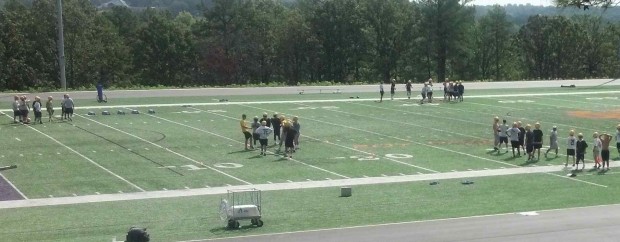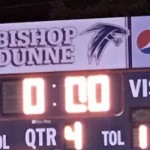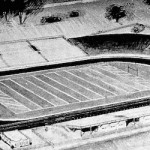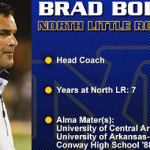
Drastic Changes to High School Football in Arkansas – Most for the Better

Temperatures are nearing the century mark, the humidity is almost unbearable and you just don’t want to be outside past 6 a.m.
It can only mean one thing: High school football preseason practices.
I’ve never cared much for early August, and I think it’s because of the memories of those grueling two-a-day practices back in high school. It has been more than 35 years, but all I have to do is smell the dry grass on an August morning in Arkansas and all the old emotions come flooding back.
I was an offensive lineman in the fall of 1977. I loved the games. In fact, I didn’t even mind the practices once school had started. But two-a-days? That was another matter entirely.
By the fall of 1978, as a freshman in college, I was the sports editor of a small daily newspaper and also found myself doing the play-by-play on radio for the team I had played for just the year before.
Having worked throughout high school at KVRC-AM, 1240, in Arkadelphia (1,000 watts of power during the day and just 200 watts after dark), I agreed early in the summer of 1978 to serve as the color analyst on high school broadcasts. Just a few weeks before the start of the season, the man who had done the play-by-play for a number of years quit the station. I found myself thrust into the lead role. I turned 19 the week of the first game.
The station’s owner, John Riggle, had handled the Arkadelphia High School play-by-play duties for much of my childhood. When I asked him for advice, he said: “Just make sure you get the names of the Arkadelphia players correct. You can call the kids on the other team anything you want. None of our listeners will know the difference.”
In 1979, which was my second season of calling Badger games on the radio, Arkadelphia won a state championship under first-year head coach John Outlaw. Friday nights were more fun than they had ever been. I’m happy to report that my love affair with high school football has never waned. These days, I find myself watching the first half of a game somewhere in the Little Rock area on autumn Friday nights and then driving to a radio studio to host a statewide scoreboard show that airs on more than 40 stations from 10 p.m. until midnight.
Those of us who have been around the sport since the 1960s and 1970s have seen drastic changes, most of them for the better.
“Sports medicine and safety have really improved for all the athletes in the state,” says Lance Taylor, the executive director of the Arkansas Activities Association.
Taylor notes that:
- Coaches are required to take first aid and safety courses every two years if they’re in the national coaches’ education program.
- Coaches are required to participate in professional development activities every three years in the areas of concussions, heat-related illnesses and communicable diseases.
- Concussion training meetings are held every year for coaches, athletes and parents. Guidelines for dealing with possible concussions must be in place and fact sheets must be distributed to athletes and their parents.
- Schools must have emergency action plans for games and practices.
- There are limits on the number of practices and the time that can be spent at practice each day.
Taylor says the quality of play also has improved due to spread offenses, spring practice and the year-round commitment that’s now required of athletes. By the same token, he fears that the year-round commitment often discourages athletes from participating in additional sports.
“Only between 2.5 and 3 percent of high school athletes move to the college level,” Taylor says. “I think young athletes need to be involved in as many activities as they can in order to be well-rounded individuals.”
When I played high school football, the go-to newspaper writer on the sport was Wadie Moore Jr. of the Arkansas Gazette. He covered high school sports for the newspaper from 1968 until it closed in October 1991. Players waited anxiously for Moore’s rankings in the Sunday paper (called the Gazette’s Best Dozen) and his predictions later in the week.
For years now, Moore has been the assistant executive director of the Arkansas Activities Association. He says high school football is in good shape in Arkansas with players who are bigger and faster than ever before. Yet Moore misses the “Derek Russell-type athletes who always speak about teammates and family first. More athletes today want to stand under the spotlight alone instead of with their teammates.”
Moore also finds himself put off by some “young coaches who have the answers to everything. Coaches from the old school talked less and worked harder.”
Worst of all, Moore says, are those parents who are “poor role models at sporting events.”
He notes that high school football in Arkansas has gone from a “ball-control, ground attack game” to a “no-huddle, aerial game that sometimes leads to contests that are an hour longer than they used to be.”
Moore says the high school football landscape also is far different. School consolidation has resulted in football teams at places such as Brookland, Cave City, Melbourne, Riverview, Cedar Ridge, Poyen and Quitman. There’s also the explosion of private schools in Pulaski County with football programs at schools such as Little Rock Christian, Arkansas Baptist, Central Arkansas Christian and Episcopal Collegiate that weren’t around when Moore began covering the sport. That’s not to mention the football programs at private schools such as Shiloh Christian at Springdale, Union Christian at Fort Smith and Conway Christian.
Moore can list the schools that have been created or have added programs since the start of the 1970s. They include Rogers Heritage, Springdale Har-Ber, Cedarville, Centerpoint, Fountain Lake, Hackett, Hartford, Hector, Magazine, Bigelow, Cutter Morning Star, Jessieville, Two Rivers, Palestine-Wheatley, Spring Hill, Parkers Chapel and Woodlawn.
And then there are the football programs that have gone away. Moore’s list includes Glenwood, Bradley, Gillett, Altus, Arkansas School for the Deaf, DeValls Bluff, Gould, Grady, Delta, North Little Rock Northeast, Fort Smith St. Anne’s Academy, Hughes, Altheimer, Eudora, Cotton Plant, Rector, Holly Grove and Lewisville.
I miss some of the old rivalries that no longer exist, but I’m enjoying football more than ever. I’ve been working on my “I miss-football-schedule” for the first 10 days of the season. If things go according to plan, I’ll head over to Estes Stadium in Conway on the night of Thursday, Aug. 29, to see the University of Central Arkansas open against Incarnate Word from San Antonio. On Saturday, Aug. 31, I’ll be off to Jonesboro to see Arkansas State against UAPB.
I’ll say goodbye to baseball for the season with Traveler afternoon games on that Sunday and Monday, which is Labor Day and my birthday. The birthday celebration will end that night with my first high school game of the season, West Memphis against Ashdown at Little Rock’s War Memorial Stadium.
I plan to be back out at War Memorial Stadium to enjoy more high school football the next night with the Kickoff Classic. On Thursday night of that week, it’s back to Estes Stadium for high school football at the Hooten’s Classic. Friday, Sept. 6, will be the first radio scoreboard show of the year. And Saturday, Sept. 7, will find me in Conway in the afternoon for the first Hendrix College football game since 1960 and at War Memorial Stadium that night for the Arkansas-Samford game.
When it comes to football, I’m of the opinion that these are the good ol’ days. I’m just glad I’m not out there practicing this week in that heat and humidity.












